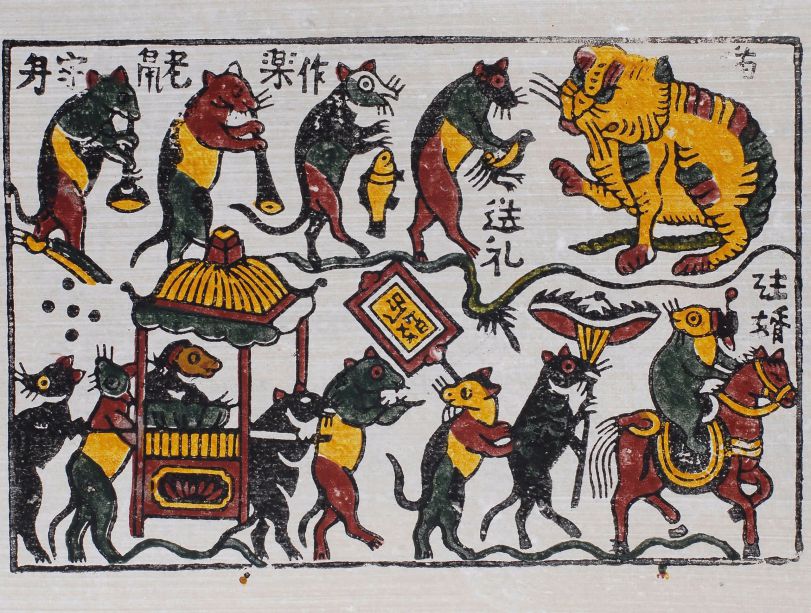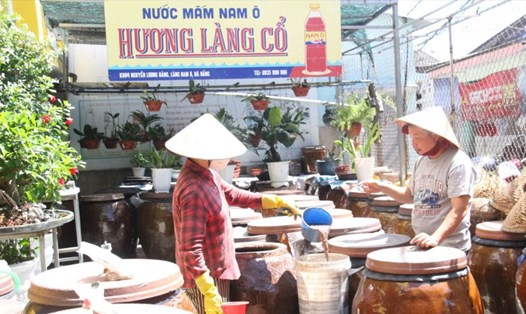Not only do they bring economic value, craft villages are also places that preserve cultural quintessence, skills and secrets passed down from generation to generation over hundreds of years of history. However, in the context of a rapidly modernizing society, traditional craft villages are facing many challenges to survive and develop.
Traditional craft villages, Vietnamese cultural identity
According to Decree 52/2018/ND-CP of the Government on rural craft development, to be recognized as a craft village, a locality must simultaneously meet 3 criteria: At least 20% of households in the village participate in craft activities; production and business activities must take place continuously and stably for at least 2 years; comply with current regulations on environmental protection of craft villages. For traditional craft villages, in addition to the above 3 criteria, there must also be at least one traditional craft that satisfies all 3 of the following requirements: The craft has appeared in the locality for more than 50 years and is continuing to develop; the craft creates products with national cultural identity and the craft is associated with the name of one or more artisans or the name of the craft village.
According to statistics from the Vietnam Craft Village Association, the country currently has over 5,400 craft villages, of which the North accounts for about 1,500 craft villages, mainly concentrated in the Red River Delta such as: Hanoi, Bac Ninh, Nam Dinh, Thai Binh... Many craft villages have existed and developed for hundreds of years, becoming cultural symbols of the locality and the whole country such as: Bat Trang pottery village, Dong Ho painting village, Van Phuc silk village, Non Nuoc stone craft village, Phu Yen basket boat village, Kim Son sedge village, Chu Dau pottery village, Dong Ky wooden craft village...
In the memory of many people, traditional craft villages are the image of simple workers with tanned skin, sitting among bamboo and colorful paper weaving frames; or skillful artisans turning blocks of clay into sophisticated bowls and vases. It is a cultural space characterized by banyan trees, wells, communal houses, folk songs, white storks, green bamboo hedges... Each craft village is a long-standing cultural, socio-economic and traditional technical environment, preserving the quintessence of art and production techniques accumulated through many generations of talented artisans.
Like an endless source, traditional craft villages still silently nurture and preserve the soul of Vietnamese culture. Every beat of the forging hammer, every stroke of the ceramic artisan’s brush, or the sound of the shuttle on the weaving loom, are all notes in the symphony of traditional customs, festivals and rituals. Through the skillful hands and delicate souls of the craftsmen, the most quintessential cultural values of the nation are passed on, breathing life into each product, overcoming time to touch the hearts of future generations.

Challenges of traditional craft villages
However, the development of modern society has had a significant impact on the existence of traditional values. Many craft villages, although still maintaining their own characteristics, are no longer as strong and bustling as before. Apart from some famous and economically efficient craft villages such as Bat Trang and Van Phuc, most other craft villages have gradually been lost. Like the sunset at the end of the day, the golden age of traditional craft villages has gradually faded. In the indifferent flow of time, many craft villages that were once proud of their hundreds of years of history have quietly sunk into oblivion, like footprints on the sand erased by the waves, now only echoing in our memories, reminding us of the cultural heritage of the nation that is gradually disappearing.
The decline of traditional craft villages is like a multi-colored picture, painted by many different strokes. Sociologists, when analyzing this picture, have pointed out a number of core causes. First, the imbalance between supply and demand is like a storm, sweeping through craft village activities. In the era of industrialization and modernization, consumer demand has changed constantly. Consumers are increasingly attracted to cheap, convenient industrial products. Moreover, the wave of cheap products from abroad is creating fierce competitive pressure. In this unequal battle, craft villages, with limited resources, are struggling to survive. In addition, the shortage of young human resources and the lack of human resources to inherit traditional professions are also the reasons why craft villages are gradually fading away.
A typical example is Dong Ho painting village - a famous craft village with a history of more than 400 years. Famous works such as "The Mouse Wedding" or "The Chicken Flock" have become indispensable symbols in the traditional Tet atmosphere of many families in the past. However, although the reputation still exists, the current situation of Dong Ho painting village is completely opposite to that fame. Today, this place has become deserted, lacking the talented artisans who once made the name of this unique folk painting genre. From 17 families making paintings, now there are only two families keeping the profession. Under the pressure of making a living, the residents of Dong Ho village had to change direction to stick with life. The place that was once famous for its unique folk paintings now has to rely on the profession of making votive paper to survive. This change is an inevitable consequence when the market demand for Dong Ho paintings is decreasing day by day. Standing before the scene of the craft village today, people's hearts cannot help but tighten, reminiscing about the golden age that has passed - when this village was still bustling with laughter, full of color and imbued with the breath of traditional culture.
Or like Ho Chi Minh City, although it is the leading development center of the country, there used to be 64 traditional craft villages. Some craft villages have a history of hundreds of years, existed through many periods and contributed to the livelihood of local people. However, the number of craft villages here has decreased significantly. For example, the grass broom and chicken feather broom making craft on Pham Van Chi Street (District 6), the weaving and mat weaving craft in Binh An (District 8), or the famous nem village in Thu Duc. These craft villages used to develop strongly but now no longer maintain their position as before.

To revive traditional craft villages
It can be said that preserving and developing traditional craft villages in modern society is a complex problem, requiring a balance between traditional and modern elements, between cultural values and economic efficiency. This is not only the responsibility of artisans and craft villages but also the responsibility of the whole society. In this process, we need to realize that preservation does not mean "freezing" craft villages in the past. Instead, we need to create conditions for craft villages to "live" and develop in the new context. This requires constant creativity and innovation, both preserving the traditional "soul" and adapting to the needs of the modern market. Some successful models such as Bat Trang pottery village (Gia Lam, Hanoi), Van Phuc silk village (Ha Dong, Hanoi) or Tan Thong Hoi bamboo blind craft village (Cu Chi, Ho Chi Minh City) show that when knowing how to harmoniously combine traditional techniques with modern technology, between production and tourism, craft villages can completely find a solid foothold in the market economy.
Craft village tourism is not just about seeing how products are made or shopping. Tourists also want to learn about the cultural values and long history of craft villages. Therefore, restoring craft village festivals will help tourists better understand the origin and value of the craft. Some countries have applied the "3 together" model when developing craft village tourism, similar to homestay. Tourists eat, stay and work with local people. This method helps prolong the length of their stay and increases the interesting experience. Tourists have the opportunity to make their own products under the guidance of artisans, creating memorable memories. This model helps preserve craft villages, generate income for local people and bring unique experiences to tourists.
Therefore, it is necessary to strengthen the planning and preservation of cultural spaces of craft villages in association with tourism development. A typical example of this success is Thua Thien Hue, where there are currently 86 craft villages and 57 traditional occupations in operation, with a team of skilled craftsmen and artisans. To promote these craft villages, Thua Thien Hue province has creatively organized the Traditional Craft Festival, both attracting tourists and introducing handicraft products to domestic and foreign audiences. Since its first organization in 2005, the Festival has contributed to "reviving" many traditional occupations and craft villages, especially those associated with tourism such as building traditional houses, making Ao Dai, embroidering paintings, enamel painting...
In addition, training and passing on skills to the younger generation also needs to be focused on. There needs to be comprehensive, long-term support policies and specific programs to attract young workers to craft villages, not only through economic benefits but also by arousing pride in the national cultural heritage. Universities and vocational colleges also need to have training programs that combine traditional skills with modern management and marketing knowledge to create a new generation of artisans who are both skilled and capable of doing business. It is the love of the profession and the passion for creativity of artisans that has helped craft villages survive and develop through the ups and downs of history. And it is also this love that will continue to be the driving force for craft villages to overcome challenges and find new directions in today's era.
Craft villages need to be proactive in innovation and creativity in production and business. They need to preserve traditional techniques and values while improving product designs and quality to meet market tastes. Some craft villages have succeeded in creating new products based on traditional techniques. For example, artisan Phan Thi Thuan in Phung Xa weaving village (My Duc, Hanoi) has researched and woven silk from lotus silk - a unique product that is popular in the market.
In the context of international integration, traditional craft villages can also become a unique competitive advantage of Vietnam in the international arena. Handicraft products imbued with Vietnamese cultural identity can become "specialties" to attract international tourists, while expanding export markets. To do this, it is necessary to have a strategy to build brands and effectively promote craft village products in the international market, focusing on building brands and developing OCOP products (One Commune One Product).
In recent years, many localities across the country have recognized the importance and focused on investing in preserving and developing traditional craft villages.
Preserving and developing traditional craft villages in modern society is a long journey, requiring perseverance, effort and constant creativity. It is not only the task of artisans and craft villages but also the responsibility of the whole community and society.
Because each craft village product contains not only material value but also the soul and identity of the Vietnamese people. Preserving and promoting these values is the way we honor the past, nurture the present and build the future.








